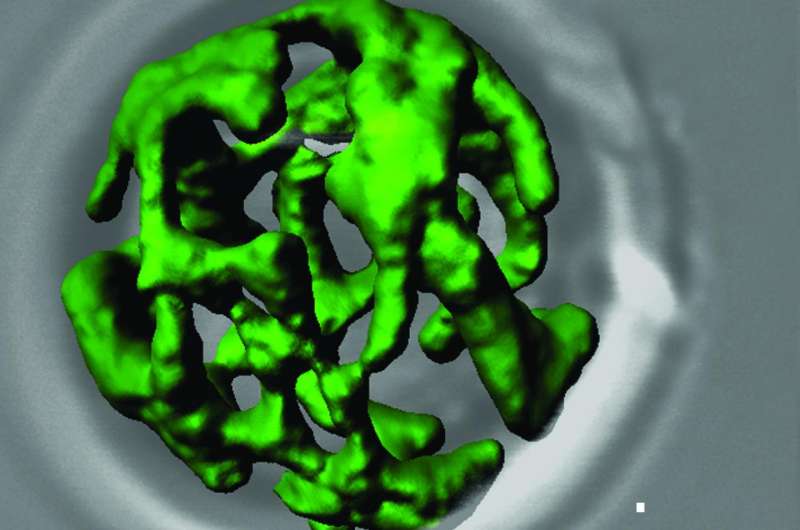The net-like structure of green colored mitochondria from the baker's yeast model organism. Credit: Source: AG Meisinger
Mitochondria are the cell's power stations; they transform the energy stored in nutrients for use by cells. If this function is disturbed, mitochondrial diseases can develop that often affect organs that have a high metabolism, like the brain or the heart. The research labs at the University of Freiburg led by Prof. Dr. Chris Meisinger and Dr. Nora Vögtle successfully mapped the landscape of proteins in the subcompartments of mitochondria for the first time. They published their research in the scientific journal Nature Communications.
Mitochondria consist of four subcompartments: one outer and one inner membrane, which are each surrounded by watery intermembrane spaces and the so-called matrix, which is the innermost reaction chamber of mitochondria. Each of these subcompartments has its own protein equipment to carry out specific functions. In addition to providing energy, mitochondria do other important metabolic tasks that involve proteins, like controlling the programmed death of cells. There are roughly 1500 species of these proteins in humans; baker's yeast, which the scientists used as a model, has 1000. Until now, researchers were unable to attribute many of these proteins to one of the four subcompartments. This is important for understanding the exact mechanisms of metabolic pathways and the functions of previously unknown proteins.
Using isolated mitochondria from baker's yeast, the researchers were able to apply fractionation methods to meticulously isolate the proteins in each compartment and hence map virtually the entire protein landscape of mitochondria. In their research, scientists from the University of Freiburg were also able to discover more than 200 additional proteins that had previously not been attributed to mitochondria. Their published study could thus serve the international research community as a basis for studying the potential new functions of mitochondria and for better understanding of the central biochemical processes in cells and the development of many diseases.
More information: F.-Nora Vögtle et al, Landscape of submitochondrial protein distribution, Nature Communications (2017). DOI: 10.1038/s41467-017-00359-0
Journal information: Nature Communications
Provided by University of Freiburg
























